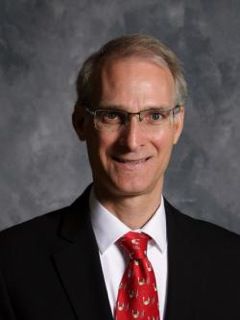RACINE COUNTY — After the polls closed on Tuesday, officials from the Waterford Union High School District and the Dover No. 1 (Kansasville Elementary School) District waited about 45 minutes to see if the referendums the districts proposed would pass.
The residents rejected both referendums.
The Waterford Union referendum asked $12.21 million to build a new fieldhouse, fitness center and related building remodeling, lost by 367 votes.
The Kansasville Elementary School referendum asked for $4.2 million to update and expand the school, lost by 22 votes. The school hasn’t had a major renovation since 1958.
Both Waterford Union and Kansasville understood the risk of asking the public for the money to finance these projects. The reason a school district decides to go to a referendum for a project is to exceed their revenue cap set by the state.
Revenue limits
The referendum with the highest voter turnout, going back to 2010, was in November 2014 when the Racine Unified School District asked the public for a $128 million referendum to upgrade and build new schools, along with providing technology in classrooms.
More than 50,000 votes were cast regarding that referendum, the most in recent years.
David Hazen, chief operating officer for Unified, said if a referendum is passed it doesn’t give the school district a blank check to use the money as it wishes.
“That limits what you can spend that money on,” Hazen said. “(The district) can’t use that money to pay for salaries for teachers, as an example. When a district looks at creating a referendum, they need to know what the reason is.”
More referendums
Over the years, the amount of money school districts have been asking residents to vote on has risen steadily, according to figures from the Wisconsin Department of Public Instruction. In 2010, there were 117 referendums on ballots totaling over $500 million compared to 2015, in which there were 202 referendums totaling over $1 billion.
In 2016, there were 223 referendums totaling more than $2.6 billion in requests. Some school officials believe that during an election year more people turn out to vote, which could result in a referendum passing.
“If you look at the data, you have a slightly better chance when it’s a general election like in November when people are coming out to vote,” Hazen said. “Some people would argue that it’s better to do it in the spring election, because then you have your voters who are the ones that vote every time.”
Asking for a referendum during a traditionally lower-turnout election increases the risk of it being defeated.
Despite this not being an election year, already there are 130 referendums on state ballots totaling more than $900 million. That includes two referendum questions from the Green Bay Area Public School District totaling more than $220 million and three referendum questions from the Verona Area School district totaling more than $180 million to be voted on in April.
In Racine County, the Burlington Area School District has three referendum questions totaling $94.4 million. That will be on the April 4 ballot in the Burlington area.
“The system set up by our state is, the schools go to the public to pay for capital cost,” said BASD Superintendent Peter Smet. “To build a new building or to do large projects, you can’t fit it into $500,000. We could cut, dramatically, our educational program … then we could do more with that budget.”
Smet added that building projects tend to come in 20-year cycles, a typical timeframe for a district to pay off a building, and that the economy is getting better.
The amount of state aid and property taxes play a big role in school districts deciding to go to referendum.
“All school districts have a revenue cap,” Hazen said. “How much we can spend per student gives us our revenue cap. That amount is divided between local property and state aid.”
Increase in per-pupil aid
For some districts, it’s difficult to keep up with building maintenance, salaries and technology by just relying on state aid and property taxes.
Kansasville District Administrator Matt Stratton said it would benefit some districts by having moderate revenue limit increases to help pay for large projects.
“The way the funding formula is now, you can’t do that, you have to go to referendum,” Stratton said. “There isn’t enough money to take out $4 million out of our bank account.”
In recent years, state aid has not increased. Last year, districts received the same amount of aid per pupil as they did the year before. This year, that number has increased about $100 per pupil.
“The money we did get was less than the rate of inflation,” Smet said. “It was difficult to live within those means.”
In the biennial budget, Gov. Scott Walker is proposing to increase the aid per pupil by about $200 each of the next two years.
“If the state gives the districts more money for operations, I think you’ll see less referendums for operating expenses,” Smet said.
For a district as small as Kansasville, with just over 100 students, the proposed increased aid might not go so far.
“That, on a very small scale, is going to help out,” Stratton said. “But that’s just the tip of the iceberg. We’ve had money taken away and we’ve had to make cuts.”
Stratton said the district has put off spending on building upgrades and repairs to focus on education.
“Unfortunately what the governor has proposed, it wouldn’t rectify the situation we’re in,” Stratton said. “It’s not that much money but it is a positive step in the next direction … it’s nice to see the governor investing in education more than in the past.”

















